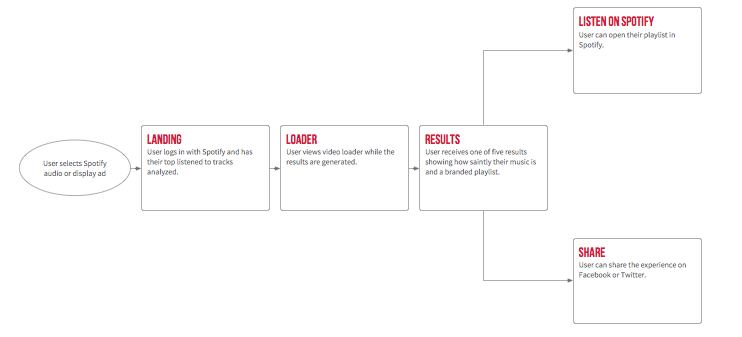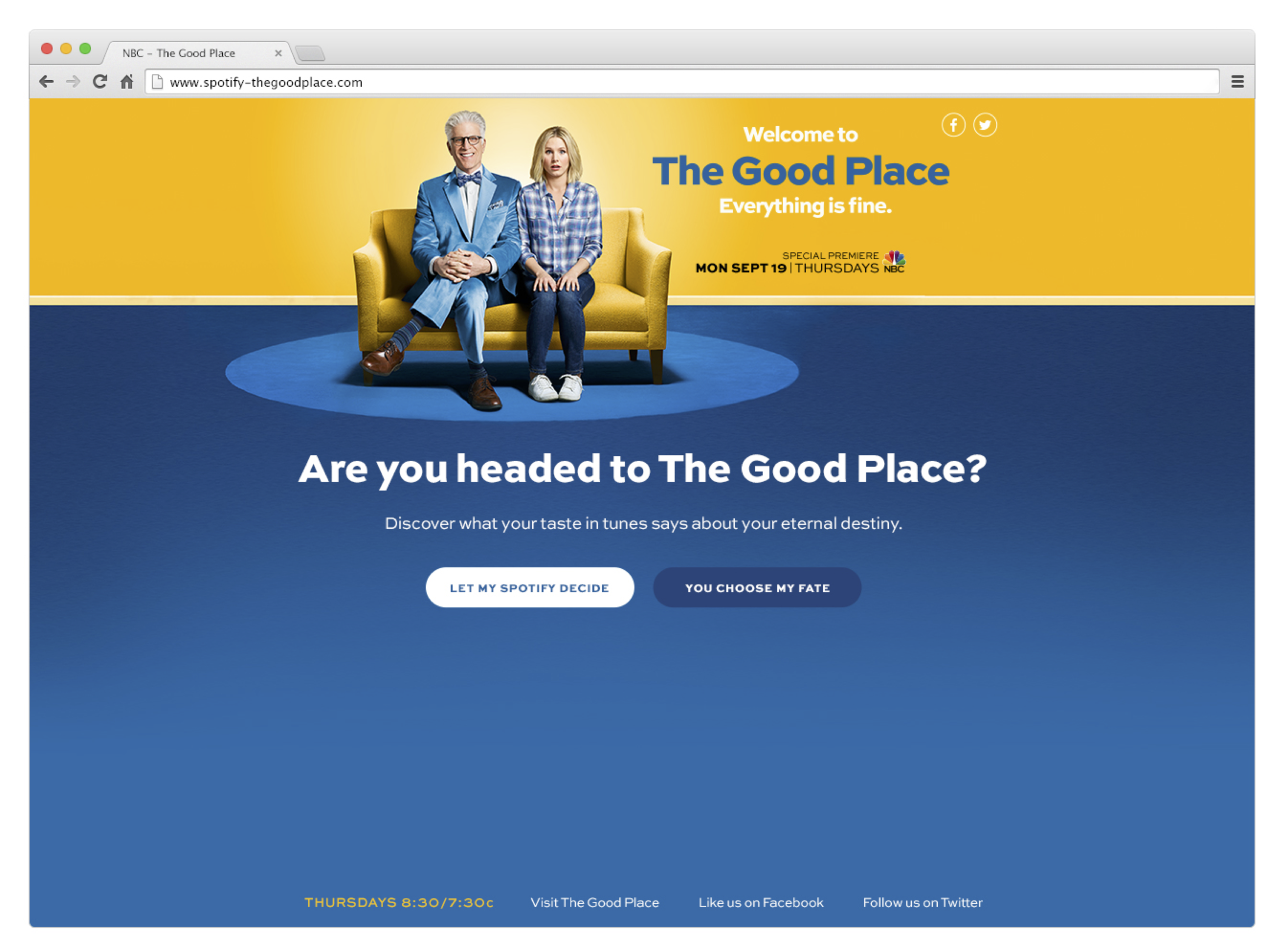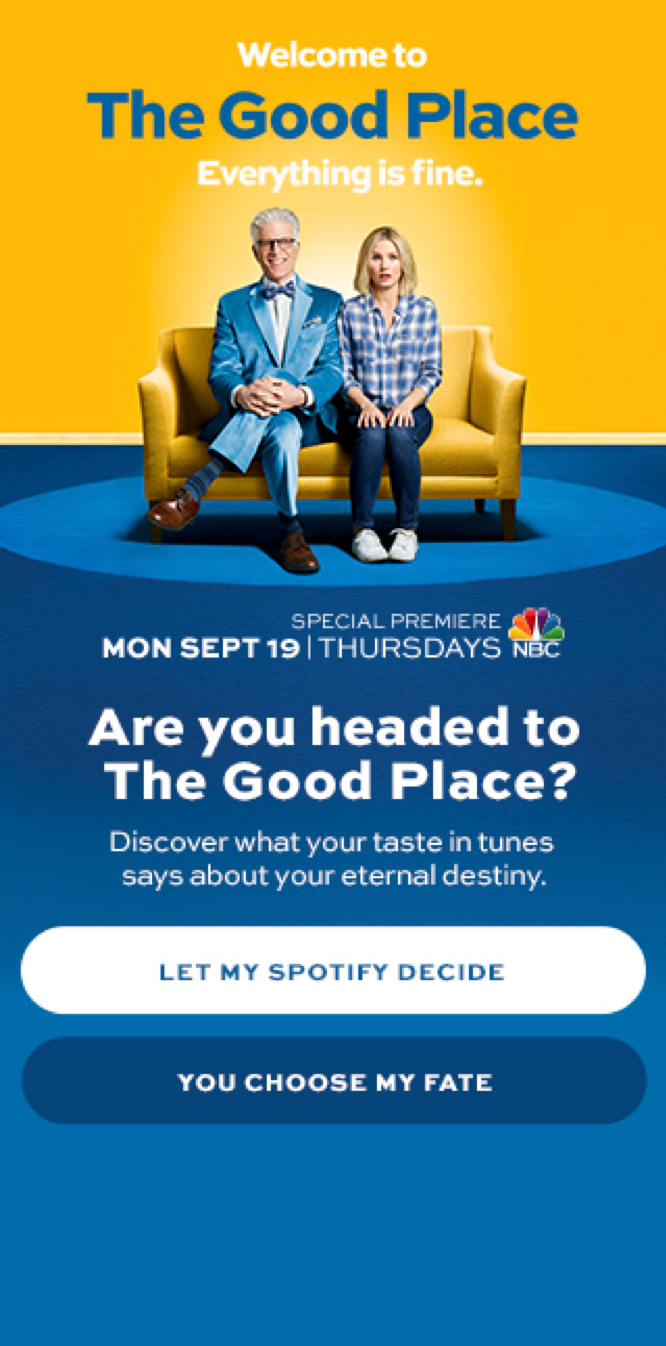NBC The Good Place
Custom Analyzer
Are you headed to The Good Place? NBC came to us with the goal of promoting a new television show called The Good Place. In this experience, users connect their Spotify account and to see what their listening history says about their fate.
Research
Initially, NBC proposed a slightly different concept which we mocked up for them as a presale. The presale subsequently sold and I designed a full-fledged experience with the new concept in mind.
The new concept had users connect their accounts to determine whether or not they're going to the 'good place' based on their music listening history on Spotify. I established what information (eg. top artists, top tracks, etc.) the developers could pull from a user's Spotify profile and then ran user tests to determine what ideal track history length (eg. 1 month, 6 months, or since the beginning of time) we should implement. Based on how many explicit tracks that were in the user's toplist, they received a score how likely they would make it to the good place.
User Flow
Following research, I outlined a user flow of the different frames that we would need to mock up.
A lot of thought was put into directing users to log in with Spotify to receive a result instead of choosing the skip option ('You Discover My Fate' button). This included playing with the layout, the location, and the treatment of the buttons as well as writing copy that was equally informative and directional.
After the initial wireframes were built and approved by the client, I worked closely with the design team to make these wires come to life!
Purity Score & Track Logic
When a user logged in, we identified the users's top 50 tracks using the last 6 months of their listening history. Part of my initial research had to do with what parameters we would use for listening history time range. Spotify has options to use the user's data from the last month, past 6 months, and since the 'beginning of all time.' I wanted to find which time frame would yield the most interesting results.
I also took note of the purity scores people were receiving so that I could delineate ideal ranges for copy purposes. Corresponding copy was served based on the user's score.
After all of the initial logic was documented, I needed to account for edge cases where the user didn't have enough of a listening history or if they chose to skip log in.
Another feature on the results page was displaying the user's top three explicit tracks, in other words, the songs that were pulling down their purity levels. For this component, the logic needed to account for cases where the user had two explicit tracks, one explicit track, or none at all.
QA
Prior to launch, I performed QA to make sure the experience was running smoothly. I worked with other team members to make improvements and gave suggestions on implementation. Most of my feedback concerned the result calculation and the user's top three bad influence tracks.









